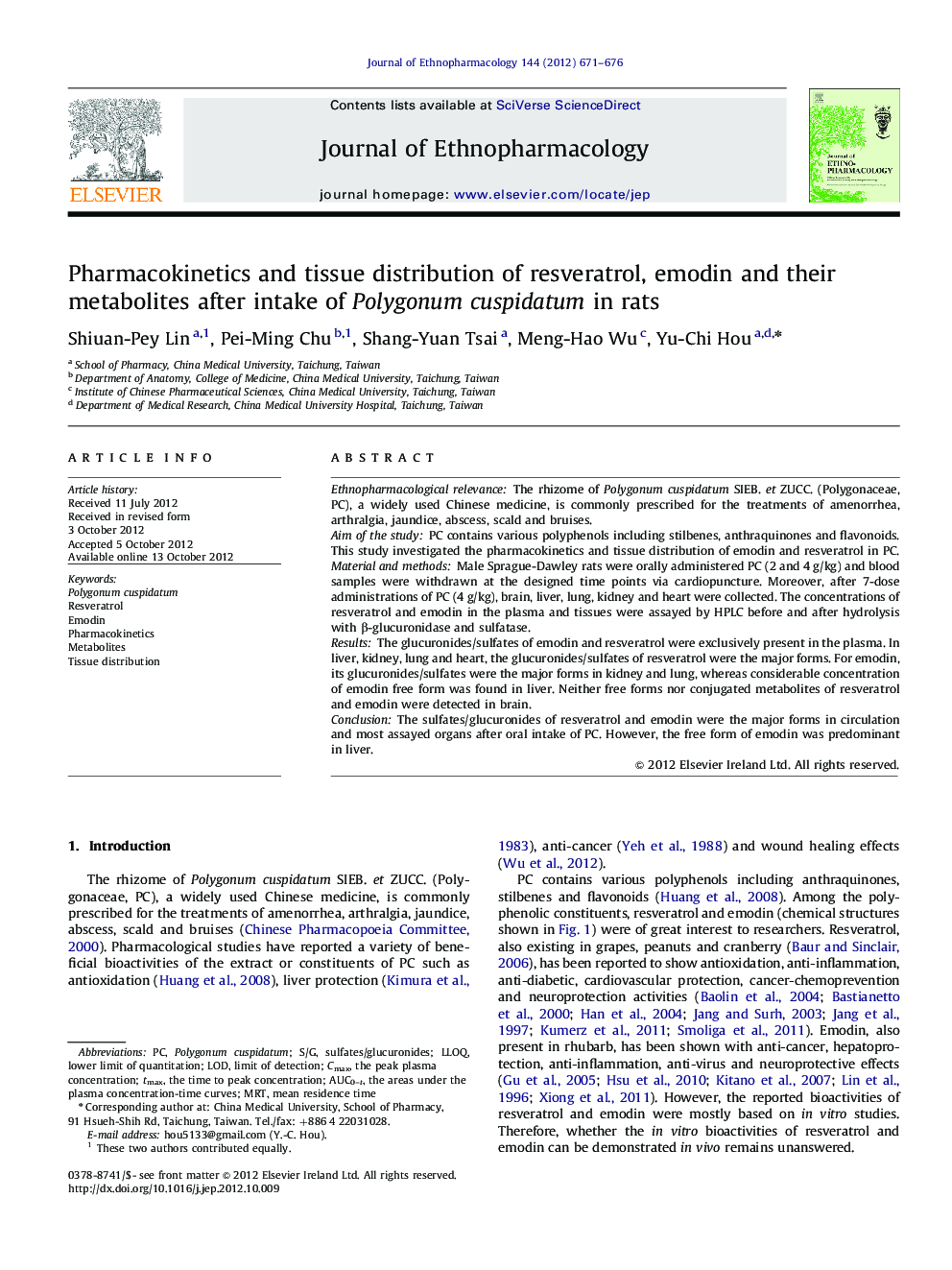| Article ID | Journal | Published Year | Pages | File Type |
|---|---|---|---|---|
| 5837891 | Journal of Ethnopharmacology | 2012 | 6 Pages |
Ethnopharmacological relevanceThe rhizome of Polygonum cuspidatum SIEB. et ZUCC. (Polygonaceae, PC), a widely used Chinese medicine, is commonly prescribed for the treatments of amenorrhea, arthralgia, jaundice, abscess, scald and bruises.Aim of the studyPC contains various polyphenols including stilbenes, anthraquinones and flavonoids. This study investigated the pharmacokinetics and tissue distribution of emodin and resveratrol in PC.Material and methodsMale Sprague-Dawley rats were orally administered PC (2 and 4 g/kg) and blood samples were withdrawn at the designed time points via cardiopuncture. Moreover, after 7-dose administrations of PC (4 g/kg), brain, liver, lung, kidney and heart were collected. The concentrations of resveratrol and emodin in the plasma and tissues were assayed by HPLC before and after hydrolysis with β-glucuronidase and sulfatase.ResultsThe glucuronides/sulfates of emodin and resveratrol were exclusively present in the plasma. In liver, kidney, lung and heart, the glucuronides/sulfates of resveratrol were the major forms. For emodin, its glucuronides/sulfates were the major forms in kidney and lung, whereas considerable concentration of emodin free form was found in liver. Neither free forms nor conjugated metabolites of resveratrol and emodin were detected in brain.ConclusionThe sulfates/glucuronides of resveratrol and emodin were the major forms in circulation and most assayed organs after oral intake of PC. However, the free form of emodin was predominant in liver.
Graphical abstractDownload high-res image (235KB)Download full-size image
